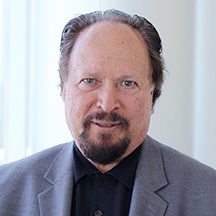
Non Functioning Pituitary Adenoma
Endoscopic Endonasal surgery is the first-line therapy for most Pituitary Adenomas
Endocrine-inactive or non-functional pituitary adenomas typically cause headaches, visual loss or loss of pituitary hormonal function.
For the great majority of patients with a symptomatic endocrine-inactive adenoma and for most incidentally discovered adenomas over 15 mm in size, transsphenoidal surgical removal (via the nose) is the treatment of choice. Fortunately, there have been major technical advances in this surgical approach over the last two decades, including use of high-definition endoscopic visualization, surgical navigation techniques and more effective skull base closure methods.
At Pacific Pituitary Disorders Program, we have one of the world’s largest experiences in endoscopic endonasal transsphenoidal surgery. By incorporating cutting edge technology and instrumentation with proven surgical experience of over 2000 endonasal surgeries, we make pituitary adenoma surgery safer, less invasive and more effective. Center Director and Neurosurgeon Dr. Daniel Kelly and his neurosurgical partner Dr. Garni Barkhoudarian and ENT Surgeons Drs. Chester Griffiths and Kian Karimi, have one of the largest surgical experiences treating patients with newly diagnosed pituitary adenomas as well as patients with persistent or recurrent adenomas after prior surgery or radiation.
For patients with adenomas that cannot be completely removed with endoscopic surgery, our outstanding radiation oncologists can deliver focused radiosurgery or radiotherapy to tumors to halt their growth.
For patients with particularly invasive and aggressive adenomas (atypical adenomas or pituitary carcinoma), our neuro-oncologists led by Dr. Santosh Kesari, can offer novel clinical trials and tumor genetic sequencing to offer therapies beyond traditional surgery and radiation treatments.
We also have highly experienced pituitary endocrinologists, Drs. Pejman Cohan and Sarah Rettinger to provide tailored hormone replacement therapy.
About Pituitary Tumors: Non-Functioning and Functional Adenomas
Endocrine-inactive adenomas do not result in excess hormone production. Instead, they typically cause symptoms due to pressure on the normal pituitary gland and/or on structures near the pituitary such as the optic nerves and optic chiasm.
Symptoms of Non-Functioning Pituitary Adenomas
Typical complaints of patients with an endocrine-inactive adenoma are those of Hypopituitarism, vision loss and headache. Hypopituitarism may manifest itself as fatigue, decreased mental function, weight gain, lethargy, joint pains, loss of sex drive, infertility and in women, irregular periods or amenorrhea. Almost all symptomatic endocrine-inactive adenomas are macroadenomas. Occasionally, they grow quite large and into the cavernous sinus, causing nerve compression and double vision. Some patients with large tumors may have hemorrhage into the tumor (pituitary apoplexy) causing rapid onset of headache, vision loss, double vision, and/or pituitary failure.
Nonfunctioning Pituitary Adenomas Diagnosis
Endocrine-inactive adenomas are diagnosed by imaging studies and hormonal testing. An MRI of the pituitary gland provides the most detail, although a brain MRI or brain CT scan will reveal most pituitary macroadenomas. Hormonal testing is also essential to evaluate for pituitary gland failure (Hypopituitarism). A complete pituitary hormonal analysis should be performed as described above and is ideally overseen by an endocrinologist.
Treatment of Non-Functioning and Functioning Pituitary Adenomas
- Endoscopic Endonasal Surgery
Transsphenoidal surgery is considered first-line treatment for symptomatic endocrine-inactive adenomas and most incidentally discovered adenomas over 15 mm in size, particularly if they compress the optic nerves or optic chiasm. Because of improved visualization, the endoscopic endonasal approach has become the preferred method for removal of pituitary adenomas, including endocrine-inactive adenomas. The long-term surgical remission or cure rate is 70-80% overall. Complete tumor removal is more likely with smaller tumors and those that do not invade the cavernous sinus or skull base; complete removal rates are lower for larger (over 3 cm) and invasive adenomas. Endonasal tumor removal improves visual acuity and visual field deficits in 75-90% of patients and headache resolution is typically seen in over 80% of patients. Pituitary function is improved 20-50% of patients while new pituitary failure may occurs in 5% of patients. Patients who do not have hormonal recovery after surgery will require hormone replacement therapy. Major surgical complications after endoscopic endonasal surgery such as vision loss, bleeding, stroke, cerebrospinal fluid leak and meningitis are quite low when performed by an experienced surgical team such as ours at the Pacific Pituitary Disorders Center. Because of the excellent panoramic visualization provided by the endoscope, it is rare (1% or less) that pituitary adenomas warrant a craniotomy for removal. - Stereotactic Radiosurgery (SRT) or Stereotactic Radiotherapy (SRS)
For patients who have residual tumor after the initial endoscopic surgery, focused radiation with SRS or SRT may be needed to control tumor growth; both treatment methods are highly effective in halting tumor growth in at least 85-90% of patients. However, SRT and SRS may result in loss of normal pituitary function over 5 to 10 years. Overall, focused radiosurgery and radiotherapy are considered very safe and effective treatments for patients with residual endocrine-inactive pituitary adenomas; neurologic complications such as visual loss and temporal lobe damage rarely occur with SRT and SRS. - Medical Therapy
There is no standard or FDA-approved medical therapy that reliably halts growth of endocrine-inactive adenomas. In some patients with aggressive adenomas, we will utilize the oral chemotherapy agent Temozolomide (Temodar) which can slow or stop growth in a minority of patients. More recently however, in such challenging cases of atypical adenomas or invasive typical adenomas, we recommend adenoma genetic sequencing to identify possible therapeutic targets. Our Director of Neuro-oncology, Dr. Santosh Kesari leads this effort and is a world expert in novel clinical trials for brain and skull base tumors.








